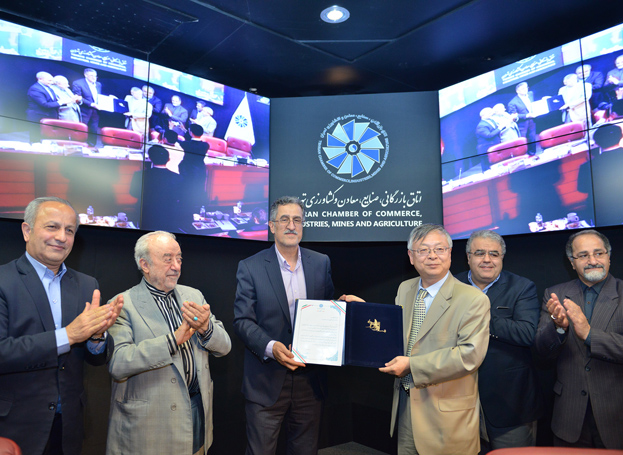No Obstacle to Chinese Finance for Iran Projects

China’s ambassador to Iran said the channel for facilitating new finance from the world’s second largest economy is open for Tehran, assuring the Iranian business community that recent banking hurdles and the alleged closure of Iranian account are only temporary, AVA Diplomatic reports.
“Chinese banks are commercial lenders and therefore the government cannot order them to do anything, but as we saw recently, two Chinese banks signed agreements with Iran to finance a number of projects, including the [electrification] of Tehran-Mashhad railroad,” Pang Sen was also quoted as saying during his meeting with senior trade officials in Tehran Chamber of Commerce, Industries, Mines and Agriculture on Saturday.
On July 26, the Exim Bank of China and Iran’s Bank of Industry and Mine signed an agreement, based on which China will extend a $1.5-billion loan to electrify the 926-km railroad.
The Chinese ambassador was joined by TCCIMA chief, Masoud Khansari, the head of Iran-China Chamber of Commerce, Asadollah Asgaroladi, and Chairman of Iran-China Friendship Association Ahad Mohammadi among others.
Pang also referred to the closure of a number of Iranian accounts in Chinese banks, saying negotiations are underway between officials of both countries “and the difficulties will be resolved with a bit of patience”.
In the past week, reports circulated that bank accounts of Iranian traders in China are being closed en masse, but a senior official with the Iran-China Chamber of Commerce, who asked not to be named, confirmed to Financial Tribune that only a handful of accounts have been blocked on suspicions of money laundering.
The closed accounts reportedly belonged to private citizens who are on non-business visits to China, but engaged in unlicensed business activities.
“Considering the FATF recommendations and the fact that Iran still remains on the list of high-risk countries, it is only natural that Chinese lenders would close the accounts of people without official business accounts and of those who transfer massive amounts of money without paying taxes,” the source added.
Separately, Iran’s ambassador to the Asian nation confirmed that the account closures have nothing to do with recent US sanctions against a limited number of Iranian individuals and entities and are in line with standards of combating money laundering advocated by the Financial Action Task Force.
“The Chinese government recently changed a number of regulations to instill increased banking transparency and fight money laundering,” Ali Asghar Khaji said, adding that the account closures as a result of these regulations are not exclusive to Iranian citizens.
Khaji added that the closed accounts belong to some branches of Agriculture Bank of China and are only limited to the trade town of Yiwu, located in central Zhejiang Province.
Trade Prospects
In the meeting held at the Tehran chamber, Khansari referred to China’s Belt and Road Initiative to develop the Silk Road as a “golden opportunity” that can elevate Iran-China ties to a new level.
Noting that Chinese citizens spend close to $100 billion on foreign trips annually, he added that planning by both countries can give Iran a higher share in attracting Chinese tourists.
Asgaroladi, a member of the board of representatives of TCCIMA, noted that trade volume between Iran and China stood at $50 million in the years immediately after the Islamic Revolution in the early 1980s, but reached a peak of $50 billion in 2012-14.
“Trade balance has consistently been in favor of Iran,” he said, noting that a fall in oil prices in 2015 caused a 20% decline in Iran-China trade that fell to $32 billion in 2016.
However, he painted a brighter picture for 2017, saying that in light of a $15 billion trade volume in the first five months, it is projected to exceed $40 billion by March 2018.
Asgaroladi noted that Iranian merchants, who are introduced by TCCIMA or the Iran-China Chamber of Commerce, are “expected to be able to obtain a one-year visa”.
The official referred to a promise he has made to China’s President Xi Jinping, that by the end of the Sixth Five-Year Development Plan in 2022, the volume of trade between Iran and China will rise between 15% and 20% annually and called on everyone to make an effort in reaching that goal.




